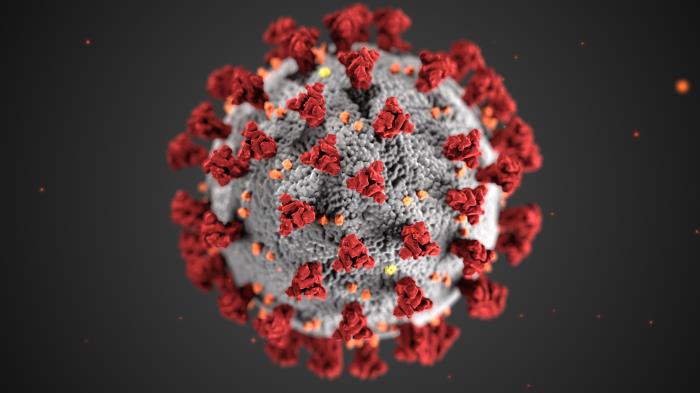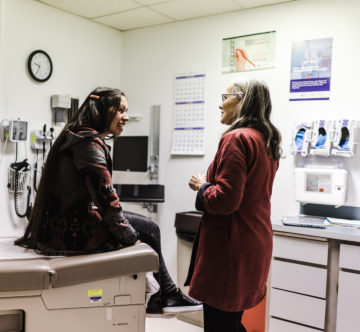Contents
Individuals with diabetes are at a higher risk for severe complications of COVID-19 and potentially at a higher risk for fatality.1-4 American Indian and Alaska Native (AI/AN) people currently have the highest rates of diabetes compared to other racial or ethnic groups, and therefore may be at a disproportionately higher risk for severe complications and possibly fatal outcomes related to COVID-19.5 Currently the Special Diabetes Program for Indians (SDPI) is the only national public health intervention that has been shown to improve diabetes related outcomes including treatment and prevention and has the potential to help mitigate the high risk of COVID-19 for AI/AN people with diabetes.
COVID-19 and Diabetes
As more research on cases of COVID-19 emerge, it has been found that those with diabetes are at a higher risk for severe complications and potentially for death compared to the general population.1-4 Some studies of this recent outbreak have found that those with diabetes or hypertension—a disease where those with diabetes are at an increased risk for having—are some of the most common comorbidities among those with severe cases of COVID-19.3 In other studies it was found that in fatal cases of COVID-19, some of the most common comorbidities were diabetes or hypertension.3 Additionally, viral infections in people with diabetes, such as with COVID-19, can increase inflammation and increase blood sugar levels which can lead to more severe complications as seen in this disease.2
However, if diabetes is well-managed, the risk of severe or potentially fatal case of COVID-19 is the same as the general population.2
About Special Diabetes Program for Indians
SDPI was created in 1997 by the US Congress to respond to the growing burden of type 2 diabetes in AI/AN communities.6 SDPI funds culturally-adapted and community-directed programs and supports them to develop and sustain high quality and effective diabetes treatment and prevention programs.7 It has increased access to treatment and prevention services throughout Indian Country—both on tribal lands and urban areas.7
Impact of Special Diabetes Program for Indians
Among AI/AN people with diabetes, SDPI has had the following results:
- Diabetes prevalence among AI/AN adults did not increase as much as it did for other racial groups from 2006 to 2012.7,8
- Obesity and diabetes rates among AI/AN youth have been constant for more than 10 years.7
- Eye diseases due to diabetes—which results in vision loss and blindness—saw rates decrease 50% since the inception of SDPI.7
- Kidney failure due to diabetes dropped by 54% between 1996 to 2013 in AI/AN adults—the largest decrease of any other racial or ethnic group—and resulted in an incidence that is the same as that for non-Hispanic white patients with diabetes.8 The cost saving associated with this decrease is estimated at $174 million to $520 million.9
- There has been a decrease in mean A1c levels, mean low density lipoprotein cholesterol, and well-controlled blood pressure measurements, all of which can reduce the rate of diabetes complications in patients.7
Among AI/AN people served by Urban Indian Organizations, SDPI has had the following results:
- In 2018, many patients audited had an eGFR > 60 ml/min/1.7m2—an indicator of good kidney health—as well as many patients audited had a systolic and diastolic blood pressure below 140 mmHg and 90 mmHg, both of which can lower the risk for diabetes-related complications in patients.10
- In 2018, 79.8% of patients audited with diabetes and hypertension were prescribed ACE inhibitors or ARBs, helping to decrease the risk of hypertension among patients.10
- In 2018, 78.0% of patients audited who use tobacco were referred to cessation counseling.10
- From 2014 to 2018, there was a statistically significant increase in the proportion of patients who received an annual dental exam which helps to prevent diabetes-related dental issues.10
- From 2014 to 2018, there was a statistically significant increase in the proportion of patients who received the hepatitis B vaccine series.10
SDPI Could Alleviate COVID-19 Risk for AI/AN Diabetes Patients
SDPI has been shown to positively impact the health of AI/AN people with diabetes and has the potential to mitigate the high risk for severe complications of COVID-19. While SDPI has achieved major successes, there is still a higher rate of type 2 diabetes in AI/AN people than any other racial or ethnic group and AI/AN people are still disproportionately affected by diabetes related complications.5,11 SDPI funded programs can continue to mitigate this higher risk of COVID-19 for AI/AN people over time as shown by its unparalleled success it has had in addressing diabetes in Indian country.
References
- Centers for Disease Control and Prevention. (2020, March 10). Are You at Higher Risk for Severe Illness?. Retrieved from https://www.cdc.gov/coronavirus/2019-ncov/specific-groups/high-risk- complications.html
- American Diabetes Association. (2020). COVID-19 (Coronavirus). Retrieved from https://www.diabetes.org/diabetes/treatment- care/planning-sick-days/coronavirus
- Fang, L., Karakiulakis, G., & Roth, M. (2020). Are patients with hypertension and diabetes mellitus at increased risk for COVID-19 infection? The Lancet Respiratory Medicine. doi: 10.1016/s2213- 2600(20)30116-8
- Centers for Disease Control and Prevention. (2020, March 10). Interim Clinical Guidance for Management of Patients with Confirmed Coronavirus Disease (COVID-19). Retrieved from https://www.cdc.gov/coronavirus/2019-ncov/hcp/clinical-guidance- management-patients.html
- Centers for Disease Control and Prevention. (2017, January 10). Native Americans with Diabetes. Retrieved from https://www.cdc.gov/vitalsigns/aian-diabetes/index.html
- Indian Health Service. Special Diabetes Program for Indians. Retrieved from https://www.ihs.gov/sdpi/. Indian Health Service. (2017, July). Changing the Course of Diabetes. Retrieved from https://www.ihs.gov/sites/sdpi/themes/responsive2017/display_objects/d ocuments/factsheets/SDPI_FactSheet_July2017.pdf
- Indian Health Service. (2014). Changing the Course of Diabetes: Turning Hope into Reality. Retrieved from https://www.ihs.gov/sites/newsroom/themes/responsive2017/display_ob jects/documents/RepCong_2016/SDPI_2014_Report_to_Congress.pdf
- Bullock, A., Burrows, N. R., Narva, A. S., Sheff, K., Hora, I., Lekiachvili, A., … Espey, D. (2017). Vital Signs: Decrease in Incidence of Diabetes- Related End-Stage Renal Disease among American Indians/Alaska Natives – United States, 1996-2013. MMWR. Morbidity and mortality weekly report, 66(1), 26–32. doi:10.15585/mmwr.mm6601e1
- Department of Health and Human Services. (2019, May 10). The Special Diabetes Program for Indians: Estimates of Medicare Savings. Retrieved from https://aspe.hhs.gov/system/files/pdf/261741/SDPI_Paper_Final.pdf
- Urban Indian Health Institute, Seattle Indian Health Board (2019). Urban Diabetes Care & Outcomes Summary Report, Audit Years 2014-2018. Seattle, WA: Urban Indian Health Institute.
- Indian Health Service. (2012, June). Diabetes in American Indians and Alaska Natives Facts At-a-Glance. Retrieved from https://www.ihs.gov/MedicalPrograms/Diabetes/HomeDocs/Resources/ FactSheets/Fact_sheet_AIAN_508c.pdf



